Discovering Slingshot Boards: A Complete Water Guide
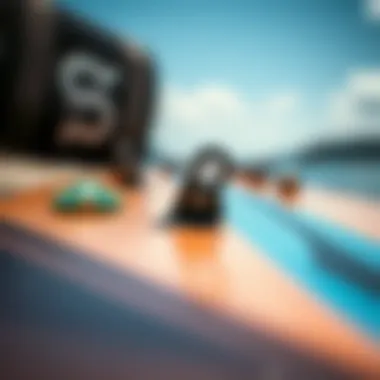
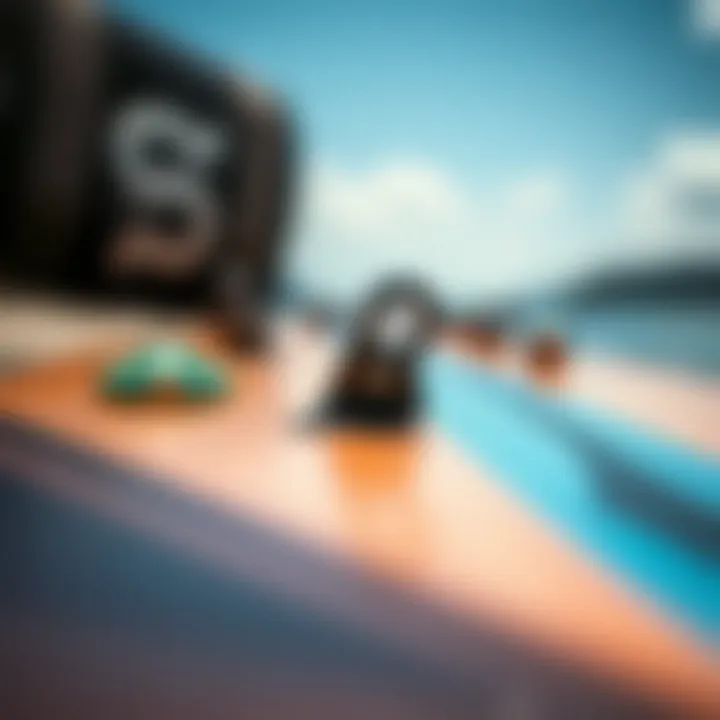
Intro
Kiteboarding isn’t just a sport; it’s a dance with the wind and the waves. But to execute this dance, you need the right tools, and Slingshot boards are among the most trusted companions a kiteboarder can have. With their unique designs and engineering prowess, these boards are crafted to enhance your performance on the water. This guide aims to dive deep into the ins and outs of Slingshot boards, balancing detail with clarity. Whether you're a complete newcomer or a seasoned pro, there’s something in here for everyone.
Understanding what makes each board tick is essential. From construction materials to the nuances of performance characteristics, the journey starts with gear selection. The choices you make can shape your entire kiteboarding experience, impacting everything from how you catch air to how you ride those choppy waters.
As the saying goes, "failure to prepare is preparing to fail." So, let’s gear up and explore the various aspects that can take your kiteboarding to the next level.
Gear Selection
Types of Kites
When venturing into the kiteboarding world, understanding the different types of kites is crucial. Kites come in various shapes and sizes, and each type has its unique features that can suit different conditions and rider skills. Here’s a brief breakdown of common options:
- C-Kites: Favored by seasoned riders for their responsiveness and performance, C-kites excel in flat water and provide excellent pop for tricks.
- Delta Kites: These versatile options are great for beginners and intermediate riders; they offer consistent pull and stability.
- Bow Kites: With a larger wind range, bow kites suit various conditions well. They allow for easy relaunch and are beginner-friendly.
- Hybrid Kites: This blend aims to offer the benefits of both C and Delta kites, delivering a balance of power and control.
Knowing your intended riding style and local wind conditions can help in choosing the appropriate kite. Different kites will behave uniquely in various environments, so do your due diligence before making a decision.
Choosing the Right Board
Selecting the right board might feel overwhelming given the choices on the market. However, focusing on a few key factors can simplify the process. Here’s what to keep in mind:
- Board Size: A larger board provides more floatation and stability, making it suitable for beginners or lighter winds. A smaller board, on the other hand, offers speed and maneuverability, preferred by advanced users.
- Board Shape: The shape influences how the board tracks in water. For instance, a twin-tip design is common for all-around use, while directional boards often cater to specific riding styles, like surf or freestyle.
- Material Construction: Look for boards made from quality materials like fiberglass or carbon fiber to ensure durability without sacrificing performance. The material can dramatically affect the board’s weight and responsiveness.
- Riding Style: Your skill level plays a significant role in board selection. If you intend to perform tricks, a more responsive and lighter board may be necessary, while a more forgiving board is suitable for smoother rides.
All these factors come into play when selecting your Slingshot board. The right fit can make a world of difference in your riding experience.
Remember, every rider is different. Take the time to test various boards to find what truly resonates with your style and skill.
As we transition to skill development, understanding your gear alone isn't enough. It’s essential to harness the right techniques and tips to elevate your kiteboarding experience further.
Preface to Slingshot Boards
In the expansive arena of kiteboarding, Slingshot boards emerge as not just equipment but companions that shape the very essence of the riding experience. When diving into this subject, it’s crucial to recognize how these boards bridge the gap between a rider's ambition and their capability to express that ambition on the water. A quick look at the terrain of kiteboarding reveals the significance of having the right tools to enhance performance, comfort, and, ultimately, enjoyment. Slingshot, as a brand, innovatively designs boards that cater to various skill levels and riding styles, making this topic not only relevant but pivotal for anyone enthusiastic about kiteboarding.
Understanding the Brand Legacy
At the heart of the Slingshot brand lies a rich tapestry of history and innovation. Established by passionate riders, the brand has gained a reputation for pioneering design and performance. Fashioned by the feedback from kiteboarders around the globe, Slingshot boards reflect a deep understanding of the sport’s nuances. This legacy penetrates into every product, where innovation meets practicality. Their approach to combining advanced technology with rider feedback has made them a leader in the industry, often being at the forefront of trends that redefine performance standards. This connection to the community is what sets Slingshot apart; they don’t just create boards; they foster a culture of excellence and adventure. Riders don’t just buy into a product; they buy into a legacy built on countless hours spent on the water and an unwavering commitment to pushing boundaries.
The Evolution of Kiteboarding Equipment
Kiteboarding isn’t static; it’s a sport that has evolved significantly over the decades, and Slingshot boards showcase this transformation vividly. Looking back, early kiteboarding boards were rudimentary at best, often featuring limited designs and materials that fell short of rider expectations. However, advancements in materials science and rider-focused design thinking have led to a revolution in board technology.
Over the years, the kiteboarding scene saw the introduction of lighter materials, greater flexibility, and better durability. For example, boards moved from heavy wooden constructions to lighter composites, directly improving maneuverability and performance. Slingshot has been one of those brands spearheading these changes. The introduction of features like adjustable foot straps and carbon fiber options has allowed for more versatile riding styles, accommodating everything from beginner maneuverability to advanced tricks and extreme conditions.
Today’s Slingshot boards reflect not just performance but also a profound understanding of rider dynamics. Their designs are a testament to years of evolution, representing a blend of tradition and innovation. This evolution is vital for kiteboarders of all levels, equipping them with the tools needed to push their limits and explore the depths of their capabilities.
In the captivating world of kiteboarding, Slingshot boards knock on the door of progress, ensuring that every time a rider steps on a board, they are not just riding; they are part of a storied legacy that celebrates innovation and performance.
Key Features of Slingshot Boards
When it comes to kiteboarding, selecting the right board can make or break your experience on the water. Slingshot boards offer a range of key features, designed to enhance performance and cater to various riding styles. In this section, we will delve into the construction materials and design elements of these boards, highlighting their importance and benefits. Understanding these aspects can empower kiteboarders to make informed choices that resonate with their skill level and riding preferences.
Board Construction and Materials
Wood Core vs. Foam Core
The choice between wood core and foam core is foundational. Wood core boards tend to provide a more natural feel, leaning heavily into flex and durability, which appeals to many riders. The advantage here is the feedback the board gives; it has a lively response that enhances the rider's connection with the water. On the flip side, foam core boards are known for being lightweight, making them less strenuous to handle, particularly for beginners or those who favor freestyle tricks. Both types have their places, but the wood core's resilience makes it a more popular choice among seasoned riders who appreciate the ruggedness and responsiveness.
Durability and Flexibility


Durability and flexibility are two sides of the same coin when you think about the board's life on the water. Durability is paramount; boards undergo a lot of stress with jumps and tricks. Having robust materials can mean the difference between a board that lasts season after season or one that quickly succumbs to wear and tear. On the other hand, flexibility is equally important as it allows for greater maneuverability and pop during tricks. Riders seeking to enhance their performance typically find that boards with a well-balanced combo of these traits can yield the best results.
Design Elements and Aesthetics
The design of Slingshot boards is more than just eye candy; it plays a crucial role in performance. Here, we examine how graphic design and color choices contribute to the overall kiteboarding experience.
Graphic Design and Branding
A board's graphic design can influence not only its aesthetic appeal but also brand loyalty among riders. The sleek graphics often reflect surf culture and the feeling of freedom that comes with kiteboarding. Additionally, branding can affect perceived value. Riders often gravitate toward brands that resonate with their personal style and aspirations, making the graphics an integral part of the decision-making process. When a rider feels aligned with a brand's aesthetic, it often enhances their overall experience on the water.
Impact of Color Choices
Color choices have a more nuanced impact than many might realize. Bright colors can enhance visibility, which becomes crucial during varied lighting conditions. Not only does this promote safety, but it also influences the rider’s mood. Studies show that colors can evoke emotions; a vibrant design can inspire energy and excitement during rides. Alternatively, softer tones might appeal to those who prefer a more subdued experience. Each color choice brings its advantages, shaping not just the board's performance, but also its appeal to various rider profiles.
"Choosing the right board isn’t just about the specs; it’s about finding a connection that enhances your entire kiteboarding journey."
Understanding the construction materials and design features can lead to greater satisfaction on the water. For enthusiasts, instructors, and event organizers, these insights not only enhance skill on the board but also contribute to a broader appreciation of kiteboarding culture. By committing to the features that resonate with individual styles, riders can craft their ultimate experience on the waves.
Performance Characteristics
When it comes to Slingshot boards, performance characteristics are not just trivial features; they are the very backbone of what makes these boards a top-tier choice for kiteboarders. These elements dictate how well a board handles the demands of various riding styles, weather conditions, and even the skill level of the rider. A deep understanding of these characteristics is vital if you’re aiming to make the most of your time on the water.
Riding Styles and Preferences
Freestyle, Freeride, and Wave Riding
Freestyle, freeride, and wave riding all bring their unique flair to kiteboarding. Each riding style appeals to different preferences and skillsets, making it crucial for riders to choose a board that fits their style.
Freestyle riding involves jumps and tricks, requiring boards that provide maximum pop and maneuverability. On the flip side, freeride focuses on smooth transitions and stable cruising, appealing to those who enjoy long rides without the need for extreme tricks. Lastly, wave riding thrives on the dynamic interaction with ocean waves, where boards need to be responsive to sudden changes in momentum.
The standout characteristic of freestyle riding is the need for pop; boards design for this have specific rocker profiles and flex patterns that cater to jump enthusiasts. Likewise, freeride boards are usually wider, offering more stability. Wave riding boards prioritize speed and quick turns to capitalize on ocean swells. However, you won't find a one-size-fits-all board here; each style has its strengths and its limitations based on the rider's experience and preference.
Adaptability to Water Conditions
Adapting to various water conditions is yet another hallmark of Slingshot boards. Whether you're tackling flat, choppy, or wave-rich waters, having a board that can adjust accordingly can enhance your riding experience immensely.
Flat water might be approachable for most boards, but choppy conditions can bring about a whole new challenge. Boards that excel in adaptability often feature unique designs such as adjustable fins and varied rocker lines that help maintain speed and control. This versatility means less fuss for the rider and more focus on performance. A common complaint among kiteboarders is poor planning when conditions change. However, boards with good adaptability can make it easier to shift focus from technique to enjoyment, regardless of the environment.
Speed and Control Dynamics
Speed and control dynamics are the unsung heroes in kiteboarding. These characteristics not only affect how quickly a rider can navigate but also how smoothly they can do so. Understanding these elements can be the difference between a thrilling ride and a harrowing experience.
Edge Control and Tracking
Edge control is the rider's ability to control their board while slicing through water. Great edge control results in superior tracking, allowing riders to maintain speed while maneuvering. This characteristic is vital, especially at high speeds or when jumping. A board that lacks good edge control will often feel like it’s slipping out beneath you, leading to potential wipeouts.
Boards designed with deeper channels or pronounced edges can significantly improve tracking, making them appealing to aggressive riders and those who want to push their limits. However, there’s a trade-off to consider. Some boards may sacrifice comfort for performance, making them better suited for seasoned riders.
Response to Rider Input
Lastly, the way a board responds to rider input cannot be overlooked. This aspect determines how precisely a rider can control the board based on their movements and weight distribution. Boards that effectively translate input lead to smoother transitions and better overall control. Response can hinge on the board's construction, flexibility, and even its shape. Riders looking for immediate feedback will often lean towards boards that are stiffer, as they provide a more direct feeling when maneuvering. In contrast, softer boards may be more forgiving but can feel sluggish at times. Each choice comes with advantages and disadvantages that can enhance or detract from the overall experience, depending on the rider's objectives.
Choosing the Right Slingshot Board
When diving into the world of kiteboarding, picking the right Slingshot board can make or break your experience on the water. This choice influences not just your performance, but also your enjoyment level. Each rider has different needs and preferences based on various factors. A one-size-fits-all approach doesn’t cut it in this sport; choosing wisely can enhance your skills and help you maximize your time on the water.
Assessing Your Skill Level
To select the right board, it's essential to understand your own skill level. Are you a newbie still finding your footing, or are you an expert seeking out the thrill of advanced tricks? For beginners, boards that provide stability and ease of control are ideal. They can help you gain confidence and build foundational skills. Look for wider boards, as they have better buoyancy and help in maintaining balance.
On the contrary, intermediate and advanced riders look for something different. These folks may prioritize boards that offer flexibility and responsiveness for complex maneuvers. They might favor a narrower design for improved maneuverability during high-speed runs or aggressive tricks. Here’s a quick guide to skill-specific features:
- Beginners: Opt for boards that are wider with a reduced rocker to ease up the ride.
- Intermediate Riders: Look for a balance of stability and performance - boards that help facilitate controlled progression.
- Advanced Riders: Seek high-performance options with responsive edges and different flex patterns to suit personal riding styles.
Always remember, a board that matches your skill not only enhances performance but also makes progress in the sport feel smoother and much more enjoyable.
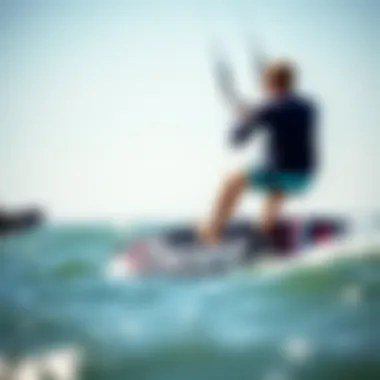
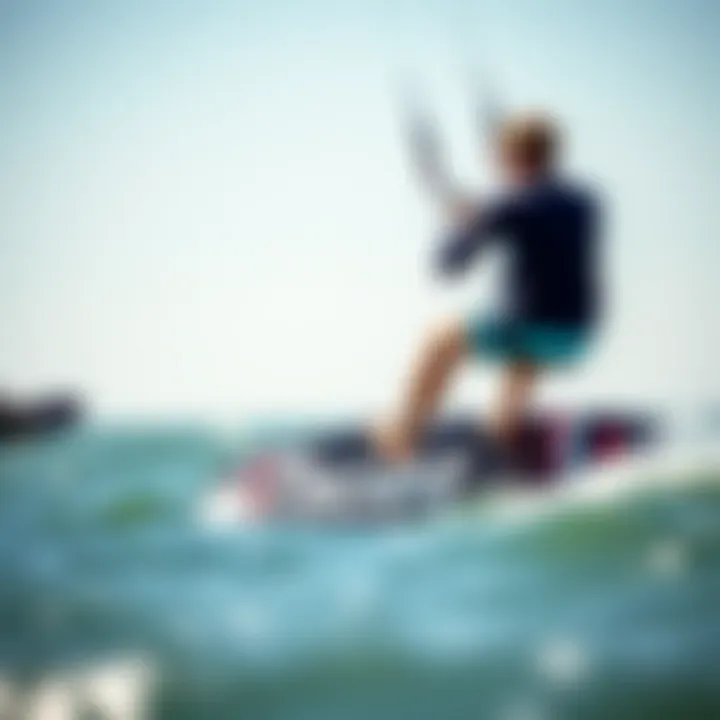
Identifying Riding Conditions
Next up, it’s crucial to think about the conditions in which you’ll be riding. The environmental factors can dramatically affect your choice of Slingshot board. Is it choppy or smooth? Are you planning on hitting the waves or gliding on flat water? There’s no denying that knowing your riding environment helps in making the right board selection.
- Choppy Conditions: In scenarios where waves and wind are unpredictable, boards with a moderate rocker angle can offer more control. They help in cutting through rough waters while still maintaining speed.
- Flat Water Riding: If your goal is to race across flat surfaces or perform tricks, a board with a flatter rocker design is beneficial. It minimizes drag and maximizes speed.
- Surf Conditions: For those who love to ride the waves, a board designed specifically for waves ensures better control and responsiveness in the surf. These boards often come with a pointed nose and rails tailored for carving.
In summary, clarity on your riding environment allows for thoughtful decisions. The right board under your feet, combined with your abilities, can make kiteboarding an exhilarating and satisfying experience.
Popular Slingshot Board Models
When diving into the waters of kiteboarding, understanding popular Slingshot board models is essential. These boards not only dictate your riding style but also influence your overall experience on the water. Slingshot has carved a name for itself with a variety of boards that cater to different riders' needs, making it necessary for enthusiasts and newbies alike to grasp the nuances of what each model offers.
Overview of Current Models
Model Comparisons
In the vast lineup of Slingshot boards, comparisons reveal a lot about their capabilities. For instance, boards like the Slingshot Rally and Slingshot Octane differ significantly in flex and shape. The Rally is known for its all-around versatility, adapted for various conditions, while the Octane offers more pop and responsiveness, making it particularly appealing for freestyle enthusiasts.
The key characteristic here is adaptability. The Rally excels in light winds, providing a smoother ride, whereas the Octane shines when it comes to tricks, offering substantial response to rider input.
Each board has its unique set of advantages and disadvantages. If you’re seeking a balance in performance across different conditions, the Rally might be your go-to. However, if you are focused on ramping up your freestyle game, the Octane will likely become your preferred choice. Understanding these distinctions allows riders to align their choice with their personal riding style and conditions they mostly encounter.
Target Audiences for Each Model
Target audiences differ dramatically among Slingshot's models. Boards like the Slingshot Cruiser are tailored for beginner to intermediate riders, emphasizing stability and ease of use. In contrast, advanced boards like the Slingshot Misfit are designed for seasoned pros who are looking to push their limits in terms of aerial performance and speed.
It's pivotal to note the key characteristic of these target audiences: skill level and riding style. Beginners benefit from boards that offer a forgiving nature which promotes learning without overwhelming them, whereas advanced riders favor designs that facilitate high performance and aggressive maneuvers. This segmentation allows Slingshot to cater to a broader spectrum of kiteboarding aficionados.
When delving into target audiences, one can’t ignore how each model might perform differently based on rider weight, technique, and preferred conditions. Thus, choosing the right model is not just about aesthetic appeal; it’s about ensuring compatibility with one’s riding aspirations.
User Reviews and Feedback
User feedback on Slingshot boards typically reflects their riding experiences and perceived value of specific models. Highlighting this information offers insight into how different riders perceive the performance of these boards, contributing significantly to the overall product dialogue. Reviews often touch upon critical aspects such as durability, responsiveness, and ease of handling, giving potential buyers a clear picture before making a purchase.
Many users emphasize the Slingshot Lightwave, with its featherweight design, noting how it enhances jumping ability while also maintaining a solid feel on the water. Positive feedback regarding how boards handle under varying conditions also surfaces frequently, creating a community viewpoint that can assist newcomers in making informed decisions.
This shared wisdom among riders strengthens the kiteboarding community and helps newcomers find their footing in the sport, proving that reviews can be a handy tool for both research and camaraderie.
Maintenance and Care for Slingshot Boards
Maintaining and caring for your Slingshot board is crucial to ensure its longevity and performance. These boards are designed for powerful maneuvers and harsh conditions, but without appropriate attention, even the best equipment can lose its edge. Just like a well-oiled machine, a board that receives regular care can perform at its best and keep you safe while kiteboarding.
Cleaning and Storage Practices
After a session on the water, it’s essential to clean your Slingshot board. Saltwater and sand can be detrimental to the board's surface and materials. Here are some strategies for cleaning and storing your board:
- Wash the board with fresh water. Use a gentle brush to remove any sand and dirt. Make sure not to scrub too hard to avoid scratches.
- Dry the board thoroughly before storing it. This prevents moisture from causing mold, which can degrade materials over time.
- Store your board in a cool, dry place. Avoid leaving it exposed to direct sunlight for long periods as this can damage the graphics and materials.
Using a board bag for storage can provide an extra layer of protection, keeping it safe from dings and scrapes when not in use. Remember, taking these small steps can go a long way in prolonging the life of your board.
Repair Techniques
Identifying Damage
Recognizing damage on your Slingshot board is paramount for maintaining its integrity. After every ride, examine your board thoroughly for any cracks, dents, or tears in the surface. The key characteristics you should look for include:
- Cracks that may appear on the rails or top surface, which can weaken the board’s structure.
- Dents that often signify impact and could affect performance.
- Delamination, where layers of the board start to separate, leading to water intrusion.
Identifying damage early helps prevent small issues from becoming larger, more costly repairs. It's much easier to fix a minor crack than to deal with a compromised board during a heavy session on the water.

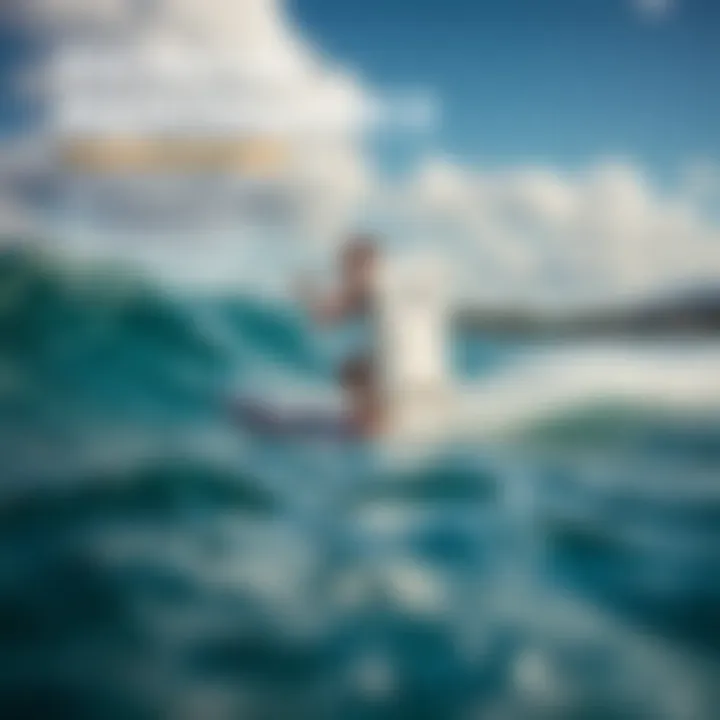
Common Repairs
If you do spot damage, knowing some common repairs is beneficial. Simple repairs can often be handled at home, saving time and money:
- Repairing cracks with epoxy resin is an effective method. It’s strong and provides a waterproof seal, which is vital for maintaining the board's integrity.
- Fixing dents might require a more detailed approach, sometimes involving heat or pressure to reshape the board followed by sealing.
- Reattaching or replacing pads and straps can help enhance your grip and comfort while riding.
Keeping your board in peak condition doesn’t just improve performance; it can also keep you safe on the water. Regular maintenance and timely repairs ensure that you are always ready to catch the next big wave.
"An ounce of prevention is worth a pound of cure."
By giving your Slingshot board the attention it deserves, you not only enhance your experience but also expand its lifespan, ensuring you get the most out of your investment. Regularly cleaning, proper storage, and timely repairs create a robust symbiotic relationship between you and your board, paving the way for many epic rides ahead.
Safety Considerations
Kiteboarding can be a thrilling endeavor, but safety is paramount. Understanding the principles of safety when using Slingshot boards is not just a suggestion; it's essential for a good time on the water. The risks associated with kiteboarding are numerous, from equipment failures to unpredictable weather conditions. This section emphasizes the importance of preparation, knowledge, and adherence to safety practices to safeguard both you and those around you.
Staying Safe while Kiteboarding
When heading out with your Slingshot board, keeping safety front and center can mean the difference between an enjoyable day on the water or a calamity.
- Protective Gear: Always equip yourself with essential protective gear. This includes a helmet to protect your head, impact vests to shield your torso, and perhaps even wrist guards. These items may seem cumbersome, but they can help reduce injuries significantly.
- Pre-flight Checks: Before you launch, conduct thorough checks on your equipment. Inspect the lines, the harness, and the kite for any signs of wear. Small tears or frayed lines can quickly lead to disaster, especially in strong winds.
- Environmental Awareness: Make it a habit to check the weather conditions before you get on the water. Wind speeds can change faster than a New York minute, and what seems like a gentle breeze can rapidly escalate into kite-eating gusts. Familiarize yourself with the area’s geography — watch for rocks, swimmers, or other obstacles that could pose a danger.
- Buddy System: Always kiteboard with a partner. Having another person with you increases safety, as they can assist in case of an equipment malfunction or if you find yourself in trouble.
"The best safety device on a kiteboard? It's the buddy system."
Understanding Equipment Failures
Equipment failures, unfortunately, can occur despite the highest level of precautions. To minimize risk, kiteboarders must familiarize themselves with potential failure points and how to respond effectively.
- Common Problems: Know what to look out for. Issues like line breaks, kite malfunctions, or board buoyancy failures can significantly impact your safety. Understanding these points means you’ll be better prepared if something goes wrong.
- Immediate Responses: In an event of a failure, staying calm is vital. Panicking can escalate the situation. If your kite fails, know how to execute an emergency landing safely. Educate yourself on how to bring the kite down smoothly to minimize risks to yourself and others.
- Regular Maintenance: Keeping your Slingshot board and associated equipment in good shape can thwart many common failures. Regularly inspect and service your gear, replacing any worn-out parts to ensure everything stays in top shape. This isn't just about performance; it's ultimately about safety.
Environmental Impact of Kiteboarding
The environmental footprint of kiteboarding is an increasingly vital topic of discussion among enthusiasts, instructors, and organizers alike. As with any sport that interacts closely with nature, there’s a balancing act between enjoying the outdoor experience and ensuring the ecology remains intact. Understanding the impact kiteboarding has on our oceans, beaches, and overall ecosystems will help in crafting a sustainable future for this beloved activity.
Sustainable Practices
Developing sustainable practices is essential for minimizing the ecological effects of kiteboarding. By adopting a few thoughtful approaches, hobbyists can enjoy their passion while protecting the environment. Here are some suggestions for kiteboarders looking to go green:
- Eco-Friendly Equipment: When choosing boards and kites, look for brands that prioritize sustainable materials. Many manufacturers are now producing equipment with recycled content or more environmentally benign materials. This helps reduce waste and conserves resources.
- Leave No Trace: A simple principle, but so critical. Kiteboarders should always clean up after themselves and ensure no litter is left behind on beaches. This includes everything from small plastic wrappers to broken gear parts.
- Responsible Travel: Consider the impacts of traveling to your desired kiteboarding locations. Opt for carpooling or using public transport whenever possible. Reducing carbon footprints as much as possible is one way to contribute positively to the environment.
- Engaging with the Local Community: It’s important for kiteboarders to connect with local conservation groups. Joining local clean-up operations not only aids the environment but also fosters relationships within the kiteboarding community and educates participants on the specific ecosystem of that area.
Protecting Kiteboarding Locations
Maintaining the beauty and health of kiteboarding hotspots is crucial for the longevity of the sport. Here are some considerations to ensure these locations continue to serve as suitable playgrounds for riders:
- Monitoring Wildlife: Many kiteboarding areas are home to delicate ecosystems. Understanding these habitats can help minimize disturbances to local wildlife, especially during breeding seasons when birds and marine life are particularly vulnerable. Awareness can steer riders away from sensitive zones.
- Designated Areas: Following local guidelines and riding in designated areas helps mitigate the impact on popular spots. This prevents overcrowding and keeps both the environment and fellow boarders safe.
- Educating Others: Sharing knowledge about protecting kiteboarding locations is a responsibility for every kiteboarder. By educating newcomers about the ecological significance of their surroundings, veterans can help foster respect and consideration for the areas they enjoy.
"The ocean and kiteboarding spots we love need our help. By adopting sustainable practices, we ensure these unique locations thrive for future generations of riders."
Finale
In the intricate realm of kiteboarding, Slingshot boards stand out as a pivotal element for riders. Their design and performance features not only enhance the overall experience on the water, but also cater to a broad spectrum of skill levels and riding styles. Understanding the nuances of Slingshot boards can lead to more informed decisions, ensuring that enthusiasts get the most out of their sessions. This article has emphasized the importance of board construction, the impact of design elements, and the value of maintenance practices. Each of these features plays a crucial role in maximizing performance and safety while kiteboarding.
Moreover, as the world of kiteboarding evolves, staying up-to-date with advancements in board technology and environmental considerations will greatly benefit riders. The community thrives when individuals prioritize not only their experience, but also the preservation of the beautiful locales where they ride. To encapsulate the essence of what we discussed, let’s dive into the key takeaways.
Summarizing Key Takeaways
- Board Characteristics Matter: Choosing the right materials and designs can drastically affect performance.
- Understanding Your Style: Whether you're freestyle, freeride, or wave riding, understanding the board that complements your technique is essential.
- Regular Maintenance is Key: Engaging in best practices for care and repair ensures longevity and reliability in your equipment.
- Safety First: Staying informed about safety practices can lead to more enjoyable and risk-free experiences on the water.
- Environmental Awareness: Being mindful of the impact kiteboarding has on natural spots is crucial for sustainable practice.
Looking Ahead in Kiteboarding
As kiteboarding continues to evolve, one can expect to see exciting innovations in board technology, fabrics, and designs. Companies are increasingly embracing sustainable materials in their manufacturing processes, which not only serves to protect the environment but also appeals to conscientious riders. New riding techniques and styles are emerging, enriching the overall sport and its community.
Additionally, the growth of kiteboarding events and competitions around the globe fosters a vibrant community. Collaborations between brands and communities will likely result in enhanced awareness and education surrounding best practices in both riding and environmental preservation. Facing challenges like climate change will require kiteboarders and manufacturers alike to remain adaptable and forward-thinking. Thus, being part of this vibrant community prepares you for a ride filled with joy, learning, and respect for our planet.
"Kiteboarding is not just a sport; it’s a lifestyle intertwined with nature. The choices we make today will shape the riding experiences of tomorrow."
Engagement with this evolving sport holds vast potential for personal growth and adventure. As newcomers and veterans alike navigate the waters, each session enables a deeper connection with both the sport and the environment.















